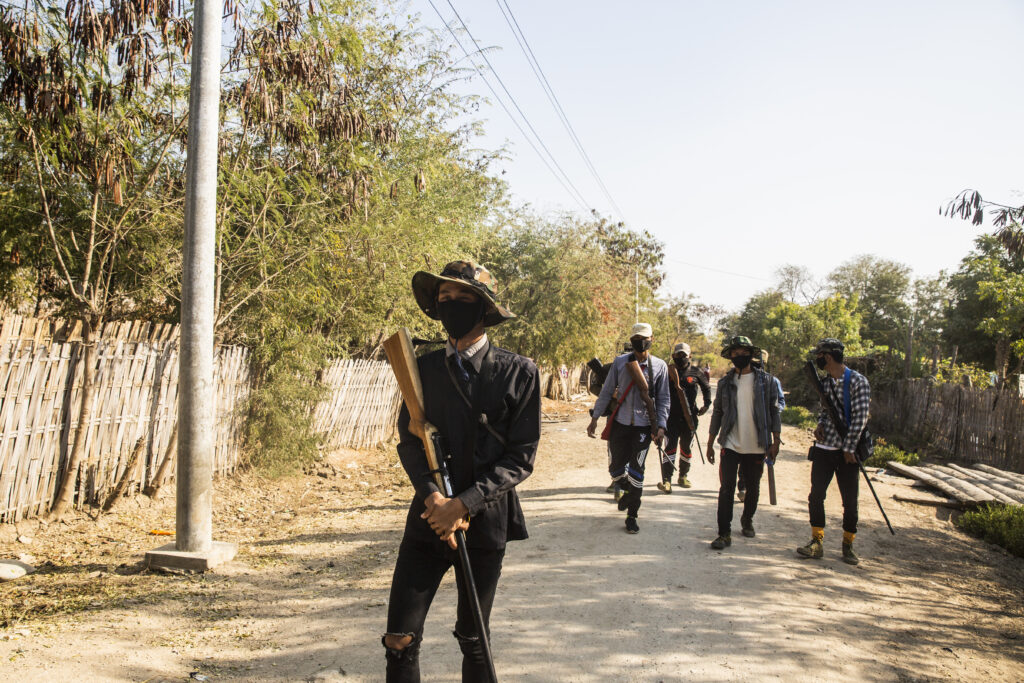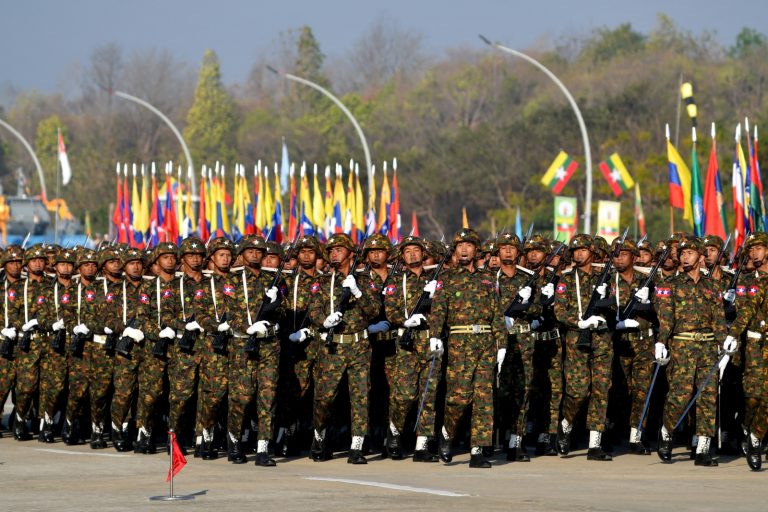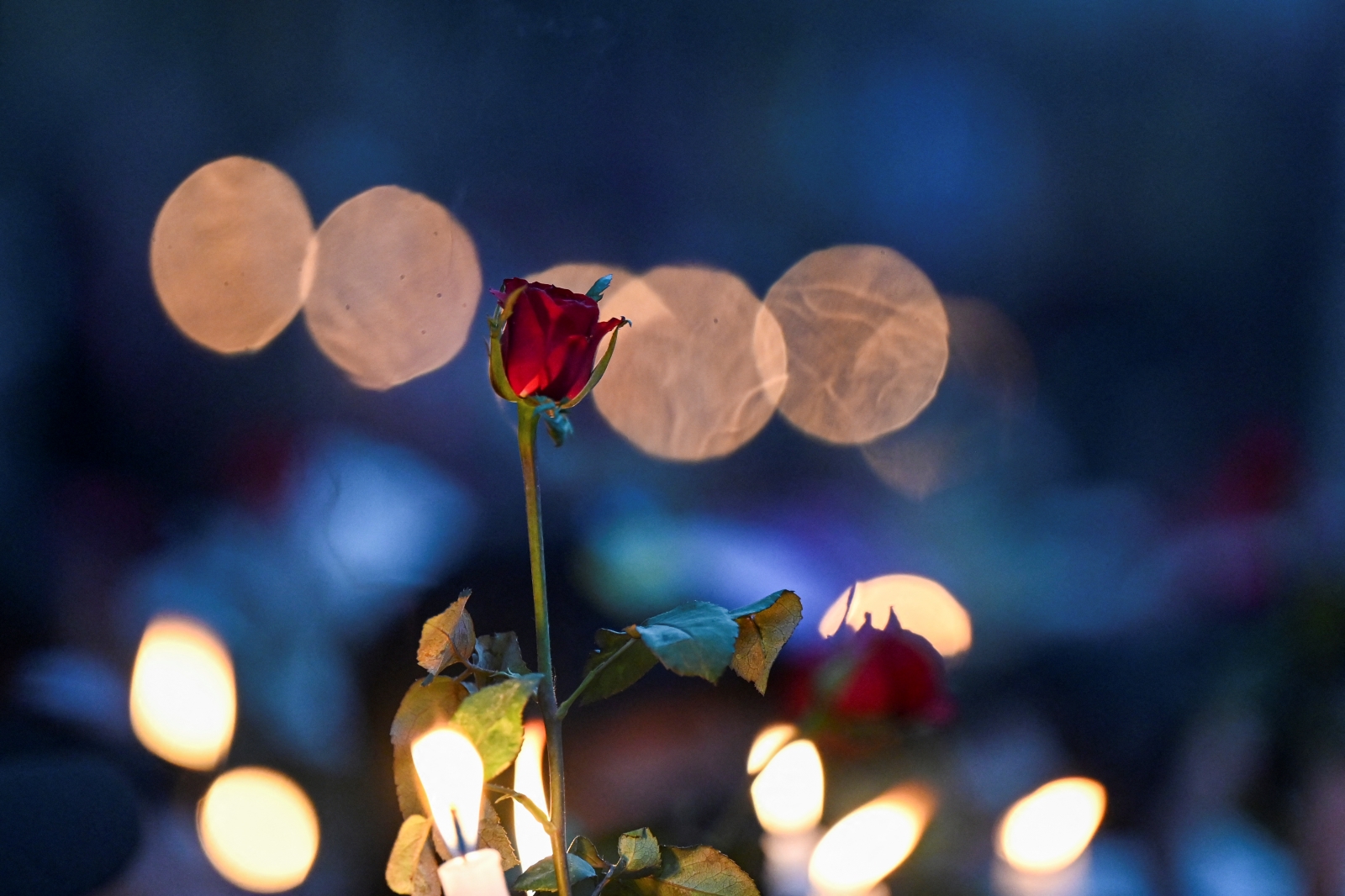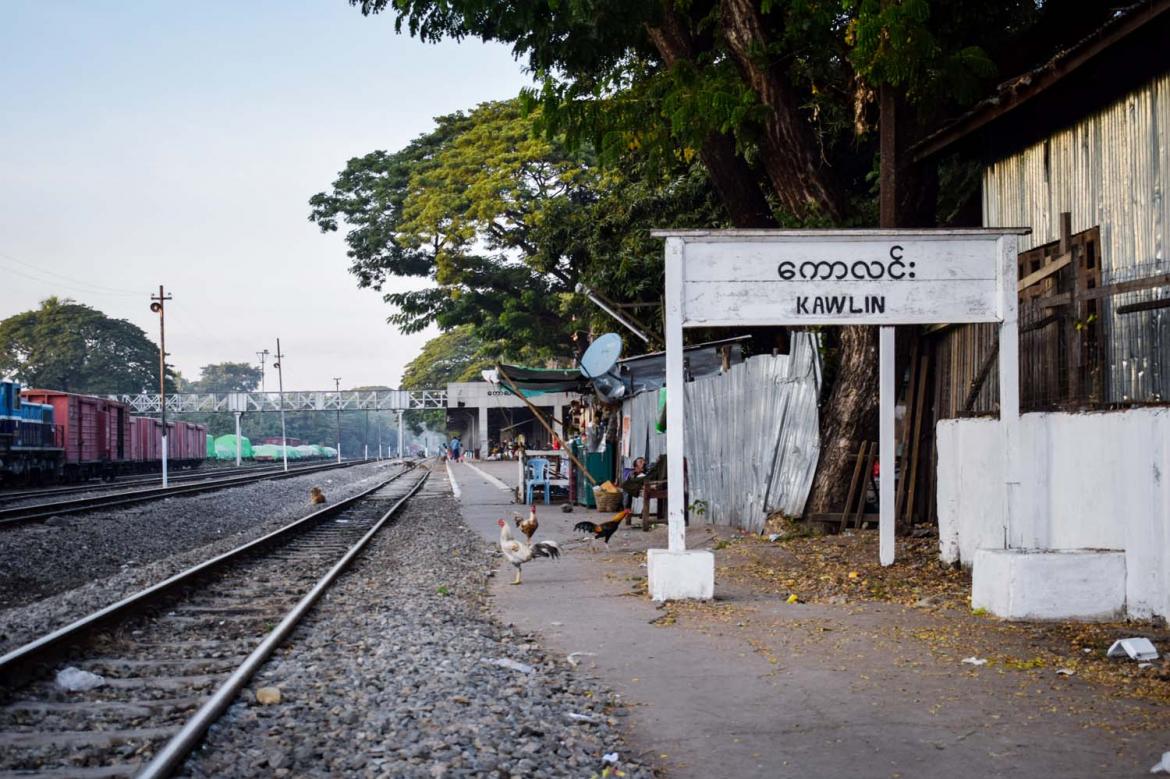A spate of clashes between resistance forces has led to calls for a conflict resolution mechanism, with some demanding immediate justice while others say it should wait until after the revolution.
By FRONTIER
Like many public school teachers, Ma Myint left her job to join the Civil Disobedience Movement in defiance of the February 2021 military coup. As newly formed anti-junta armed groups chased the regime out of large swathes of rural Sagaing Region, she began teaching again.
But unlike some other CDM teachers in Myanmar’s central Dry Zone, Ma Myint works for an independent community school that isn’t associated with the National Unity Government, a parallel administration appointed by lawmakers elected in the 2020 poll which the military refused to recognise.
Her husband, likewise, was a member of a local defence force – a loose term given to anti-junta militias that typically operate independently from the NUG and its official armed wing, the People’s Defence Forces.
“I was always worried that my husband would be killed by the military,” said Ma Myint in January. “But instead, he died because the revolutionary forces fired at each other.”
While Sagaing Region has emerged as a stronghold of resistance to military rule, it has also been plagued by factionalism and in-fighting. The largely grassroots, decentralised rural uprising has led to a proliferation of armed groups, some of which are loyal to the NUG, while others insist on autonomy. Even those nominally under the civilian government’s command often operate with little oversight or support.
Ma Myint said her husband was killed in August last year in Shwebo Township by Battalion 2 of the Wetlet-PDF, which operates under the NUG’s chain of command.
“My husband was looking at Facebook on his phone,” she said, claiming the PDF immediately opened fire, killing her husband and another member of the Bo Tiger militia.
She said she wasn’t even able to hold her husband as he died, as she was tied up along with the other militia members and doesn’t know what happened to his body. “I was in custody for exactly one month and one day,” she said, appealing to the NUG for justice.
The Wetlet-PDF tells a different story.
A social media page affiliated with the PDF accused the Bo Tiger militia of stopping cars travelling on the highway and extorting them for money, saying they received numerous complaints from civilians. The PDF also claimed the Bo Tiger group fired first, contrary to Ma Myint’s testimony.
“When the township People’s Defence Forces came to arrest them, the other side started shooting, so we also had to shoot. Detained people are interrogated step by step and actions are taken according to the law. There was no extrajudicial killing,” insisted U Saw Wai*, commander of the Wetlet-PDF Battalion 2.
“They collect taxes, threaten people, and extort money. If this situation is left unaddressed, the revolution may be distorted. We did what we should have done, and after properly presenting it to the relevant groups, we made a press release,” he told Frontier.
Bo Tiger member Ko Nay lamented the breakdown in relations between the armed groups.
“Previously, PDF and LDF worked together and fought on the front line,” he said. “We the people are comrades in the revolution. When they die, what is the benefit to those who shoot and arrest them? I just want to ask if this helps the revolution in any way.”
Ko Nay also disputed the PDFs characterisation of the alleged extortion, saying the group was collecting “donations”.
“We’re not under the NUG. We’re a small LDF group participating in the revolution. We have to collect donations for the revolution,” he said. “If we have no weapons and no income, we have to raise funds in various ways. Even if there is a mistake sometimes, I think it should not be resolved by shooting and arresting.”
As with many other disputes in rural parts of Myanmar, it’s nearly impossible for media outlets to confirm which side is telling the truth. But regardless of which story is correct, it points to a broader trend of conflict between armed groups and difficulty in settling disputes or establishing judicial mechanisms during an ongoing civil war.
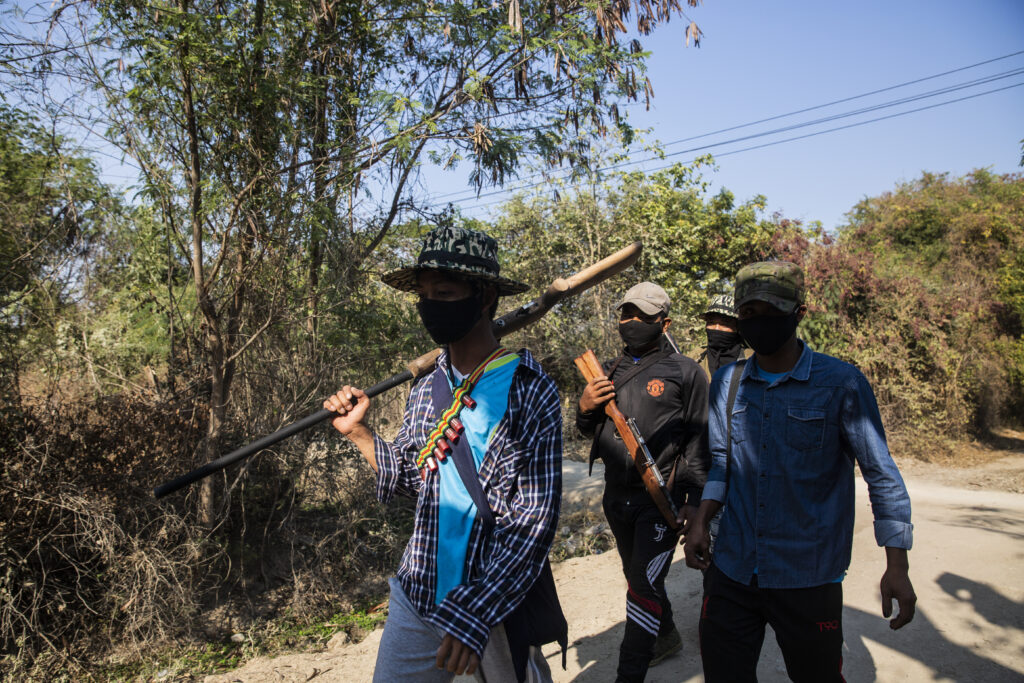
Taming the dragon
The NUG has also recently seen a breakdown in its relationship with the Myanmar Royal Dragon Army, one of the most influential independent anti-coup armed groups, led by the charismatic and popular Bo Nagar.
On January 8, district-level NUG officials, escorted by armed PDF members, arrived in Sagaing’s Pale Township to investigate allegations that the MRDA beat a PDF supporter and torched his haystacks, after wrongly accusing him of being a military informant. But when the delegation tried to arrest the suspect, they found themselves surrounded.
“They [the MRDA] threatened the district-level officials at gunpoint,” said Ko Myint Swe, who lives in Nyaungpintha village and witnessed the incident. He told Frontier the PDF was forced to release the detainee and leave empty-handed.
Ko Myo, a freelance photojournalist who reports from central Myanmar, said the MRDA troops don’t follow the code of conduct established by the NUG’s Ministry of Defence and don’t seem to recognise the authority of the NUG affiliated People’s Administration Team.
“Sometimes they set up checkpoints, collect taxes, and ask villages to donate quotas for the military fund without authorisation from the township administration. When there are criminal cases and other problems, they don’t inform the public administration organisations but pass judgements on their own and impose fines,” he said.
In another incident, a complaint was filed to the public administration after a man was allegedly blinded in one eye while being interrogated by the MRDA. Ko Myo attended a virtual hearing, along with township officials and members of the MRDA, the PDF, the victim’s family and other villages. Authorities ruled that the MRDA had wrongly detained the man and referred responsible members to the defence ministry for trial, but the MRDA rejected the ministry’s authority and said it would handle the case itself.
Tensions boiled over into the public sphere during a December 18 Facebook livestream, when Bo Nagar heatedly argued with the Pale PAT leader for nearly six hours. The PAT leader accused the MRDA of rape in December 2021 and of killing three fellow resistance fighters – all charges Bo Nagar denied and for which little evidence was presented.
“People who did wrong things should fear MRDA, but ordinary people don’t need to be afraid of us,” Bo Nagar said.
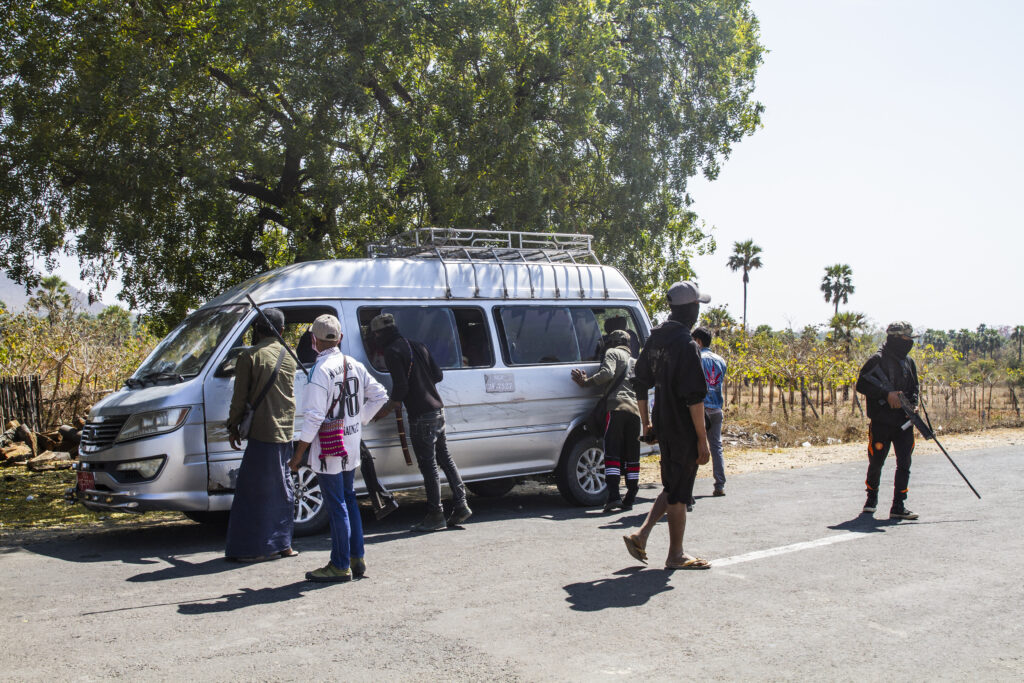
Settling disputes
Different groups have drawn different conclusions from the tensions, with some NUG-affiliated groups saying it shows everybody must be united under one chain of command, while some independent groups say the PDFs should stop trying to impose their will on smaller militias. There is also much debate as to whether these conflicts should be resolved now. Some say ending rights abuses and impunity should be part of the revolution, while others say justice needs to wait until after the regime is ousted.
“We need to work under one chain of command and work on reforms without forgetting the fact that revolution means armed struggle,” said Ko Kaung, a member of the Tabayin PDF.
He also said PDFs have a central role in conflict mediation by necessity, and some disputes can’t be resolved until after the revolution is completed.
“There are cases where offenders apologise in writing. This is the only practical solution. Simple,” he said.
Ko Myat Moe*, a member of the Peacock Soldier Guerrilla Force, which is based in Shwebo and independent from the NUG, said NUG-affiliated groups are trying to dominate smaller PDFs. He also said it’s important to establish a system of resolving conflicts between NUG and non-NUG groups.
“If it’s necessary to deal with groups under the NUG, then it’s also important to establish which type of organisations can manage and decide disputes,” he said, adding that the armed groups shouldn’t be involved in the judicial process at all.
U Kyaw Zaw, a spokesman for the NUG President’s Office, told Frontier in June last year that the parallel government was forming “judicial bodies” in “our stronghold areas”. Spokesperson U Nay Phone Latt said in January that the NUG is now creating a new “military law department” to establish a court-martial process for fighters accused of wrongdoing. “Complaints can be made at the relevant levels,” he said.
He said the law would cover groups under the NUG’s command as well as “revolutionary organisations that are not under the NUG”. The NUG would also negotiate with allied ethnic armed groups that already have their own laws and seek to “balance” their interests, Nay Phone Latt said.
Ko Min, a member of the People’s Administration Team in Pakokku Township in neighbouring Magway Region, said a more coherent policy is urgently needed to address problems between resistance groups.
“On our side in Magway, the public administration bodies at township and district levels often have to clear up these kinds of issues,” he said, but they operate without codified policies. Ko Min said another problem is that many resistance fighters are poorly educated and have become accustomed to solving disputes through force.
“Awareness of human rights and the rules of war is very poor,” he said. “If I ask many of my comrades, most of them will say that they fight for the love of Amay Su [Daw Aung San Suu Kyi], and for their right to be free in their daily lives.”
The NUG does have a history of investigating and reprimanding its own forces but has shown little ability to control or punish them.
In another incident in Sagaing, the NUG-affiliated Yinmabin-PDF under Bo Thanmani faced allegations last year of wrongfully killing 21 people, including civilians and members of an independent resistance group. The NUG investigated and found the PDF guilty of at least 10 wrongful killings, including members of the Hero Tiger Force and firefighters.
The NUG statement said Bo Thanmani wasn’t personally responsible, blaming his subordinates, but still summoned him and four other members of the PDF for questioning. They ignored all three requests to present themselves.
“I have already spoken to the official media since the matter began to be talked about. It’s already in the statements of NUG. These problems were not committed by me, but by the people under me,” Bo Thanmani told Frontier in January. “But since I am the leader, I have to be responsible, and I am ready to take the blame. After the revolution, these issues will be resolved. I just want to say let’s finish our revolution first.”
But as usual, the victims’ families are not satisfied with these promises.
“We want action taken as soon as possible,” said Ma Yut Yee*, the sister of one of the slain Hero Tiger members. “I can’t wait until the revolution is over. These fascist practices must be eradicated as part of the revolution. I want justice for my brother and all the other victims. I want to see the culprits punished.”


